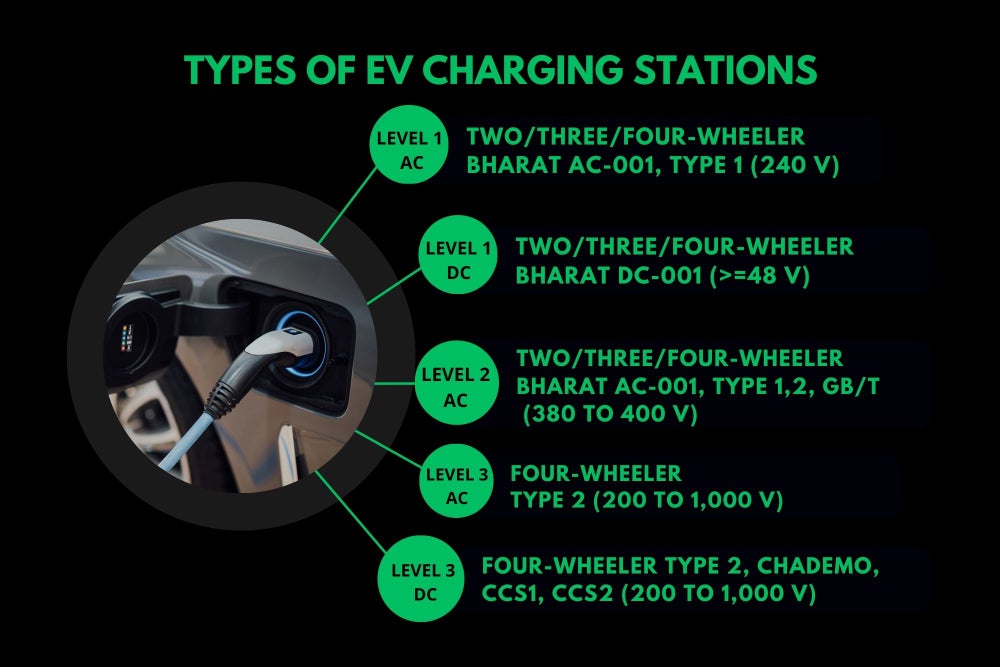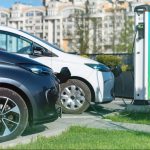Opinions expressed by Entrepreneur contributors are their own.
You’re reading Entrepreneur India, an international franchise of Entrepreneur Media.
India is the third-largest market for automobiles in the world and the government is actively promoting the use of electric vehicles through various initiatives. To further support the growth of EVs, setting up EV charging stations is essential. In this article, we will discuss how to set up EV charging stations in India.
There are several steps which are needed to be kept in mind while setting up an EV charging station. In order to determined the viability of the project, it is very important to conduct a feasibility study which should consider factors like the location, power supply, charging station type.
Location and Charging Speed: The EV charging station should be easily accessible and convenient for the users, so the location of an electric vehicle charging station is crucial. Proximity to highways, commercial areas, residential areas, and other popular destinations should be key factors to consider while selecting the location to set up the charging stations. Charging Speed is the key issue when we talk about setting up of a charging station as different EVs have different charging requirements. It becomes important to ensure that the charging station can cater to a wide range of EVs. Fast charging stations are ideal for highway or long-distance charging, while slower charging stations are more suited for residential or commercial areas.
Power Supply and Charging Standards: In order to determined the type of charging station that should be installed, the power supply becomes critical for that as the charging station must be connected to a reliable power supply and the electrical capacity of the site should be sufficient to support the charging station’s requirements. Also, when planning to set up a charging station, it is essential to select a charging station that is compatible with a wide range of EVs and charging standards.
Obtain Necessary Approvals: One has to obtain necessary approvals from the authorities, including the state electricity board, local municipal corporation, and the Ministry of Power. It is important to ensure that all the necessary permits and licences are obtained before commencing operations.
Test and Commission the Charging Station: Once, the location, charging standards and equipments are installed; one needs to test and commission the charging station to make sure it works properly. This practice involved checking the power supply, the charging speed, and the compatibility with different EVs.
Types And Standards Of EV Charging Stations In India
There are three types of electric car charging stations: Level 1, Level 2, and DC Fast Charging. Level 1 charging stations use a standard 240-volt outlet and take up to 12 hours to charge an EV. Level 2 charging stations require a 380-400-volt outlet and can charge an EV in four to six hours. DC Fast Charging stations are the fastest and can charge an EV up to 80 per cent in just under an hour. The cost of installing each type of charging station varies.

The following graphic provides more detailed information about the types of EV charging stations:
Bharat DC 001: This is a fast charging standard developed by the Indian government and is used for charging electric two-wheelers and three-wheelers. This standard requires a charging rate of up to 15 kW and uses a charging connector with a 15A/48V DC rating.
Bharat AC 001: This is also made by the government and is used to charge cars and buses, requiring a charging rate of up to 15 kW and uses a Type 2 connector for AC charging.
CCS (Combined Charging System): This is an international charging standard used for fast charging of electric vehicles. It uses a Type 2 connector for AC charging and a CCS connector for DC fast charging. CCS charging stations can provide up to 350 kW of charging power.
CHAdeMO: CHAdeMO is a fast charging standard developed in Japan and is used by several EV manufacturers. It uses a CHAdeMO connector for DC fast charging and can provide up to 62.5 kW of charging power.
Infrastructure For EV Charging Stations In India
While setting up an EV charging station requires a significant amount of infrastructure including electrical, mechanical, and technological components. It requires electrical infrastructure such as transformers, switchgear, cabling and power distribution units.
It also needs technological infrastructure, such as payment systems, network connectivity, remote monitoring and customer support. Lastly, a charging station requires ample parking space with easy entry and exit points.
Government Incentives
In order to push electric vehicle penetration in India, the government has come up with several schemes that can help entrepreneurs. Here are several incentives to encourage the setting up of EV charging stations.
FAME II: The Faster Adoption and Manufacturing of Electric Vehicles (FAME) II scheme provides financial incentives for setting up EV charging infrastructure in public places, including highways, parking lots, and other public places.
GST Exemption: The Goods and Services Tax (GST) exemption is available for EV charging stations and EV charging equipment. This exemption can help reduce the cost of setting up EV charging stations and encourage more investors to enter the market.
Capital Subsidy: The government provides a capital subsidy of up to 25 per cent for setting up EV charging stations in select cities. This subsidy can reduce the initial investment cost and make the project financially viable.
Public-Private Partnership: The government is encouraging public-private partnerships (PPP) for setting up EV charging infrastructure. Under this model, the private sector can invest in setting up the infrastructure, while the government can provide land, regulatory support, and other necessary assistance.
The abovementioned incentives can reduce the cost of setting up EV charging stations and make the project financially viable.
To read the full article, Click Here




